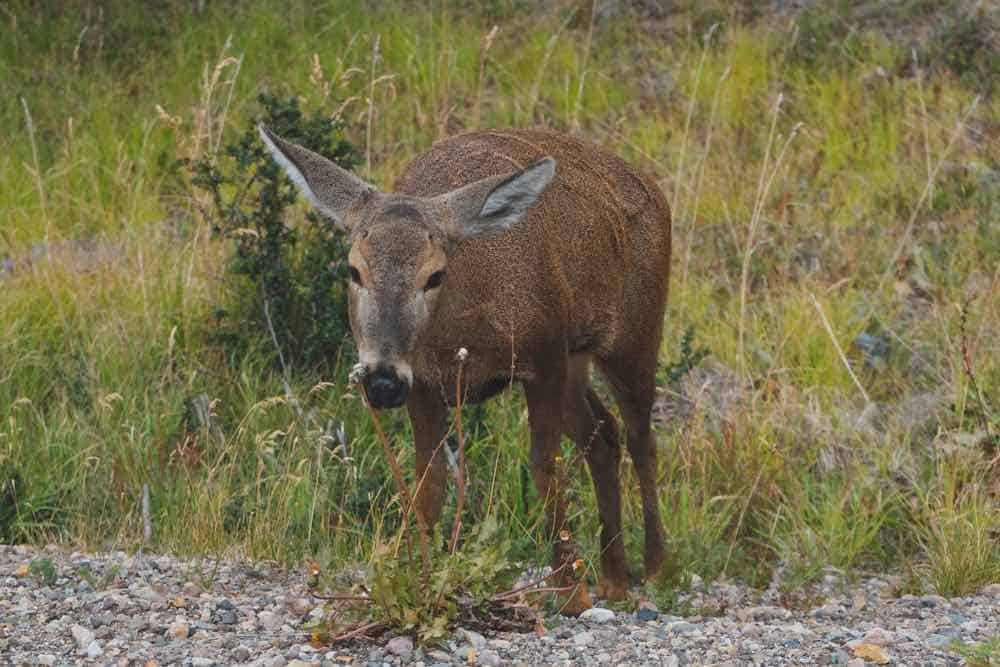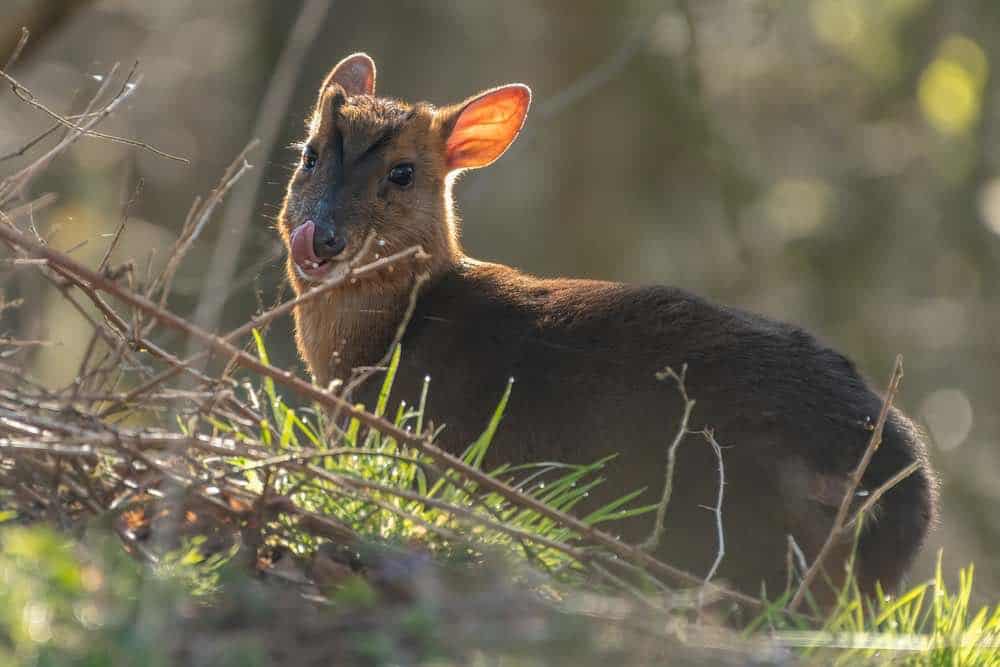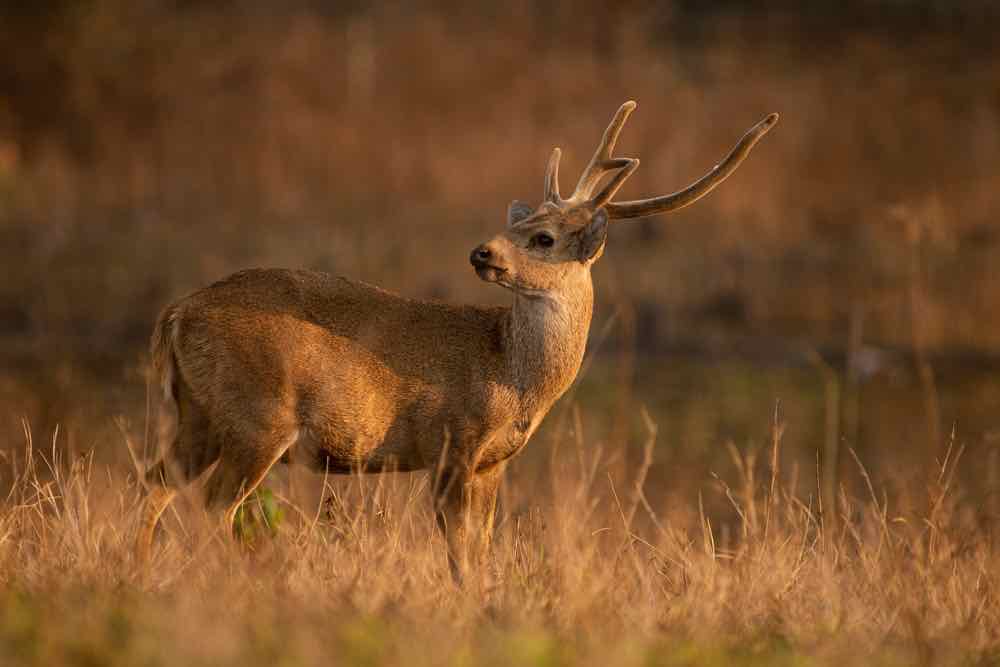A flighty and anxious breed of deer, the Barasingha Deer are not easily spotted in their native habitats; but when you do lay eyes on them, you will know what a special and beautiful deer species they are.
Read on to learn all the important facts about Barasingha Deer—from their origins to their environmental impact on their native habitats, and the struggles and dangers they are faced with today.

History and Origins of the Barasingha Deer
The Barasingha Deer traces it origins to the subcontinent region of India, where it was first spotted among the Himalayan mountains but more frequently can be found inhabiting riversides, wetlands, and even marshes and swamps—thus giving it its alternate name, “the swamp deer”.
The name of this elusive deer species is believed to be a commemoration of a French naturalist named Alfred Duvaucel, and the species’ name itself harkens to that which sets the Barasingha Deer apart from all other species of Indian deer: the number of tines on the horns of a mature stag. In the Hindustani language, bārah-singgā means “twelve-horned”, and the male deer of this species may have as many as 10 to 14 tines on his antlers, making this a very apt name indeed.
The Barasingha Deer was first noted in the 19th century as a species ranging near the base of the Himalayan mountains, and over time afterward their spread was noted among many localities in India, with about 1,600 to around 2,100 total deer noted in the region in the 1960s with another 1,600 or so marked in Nepal at that time.
However, unregulated hunting and the conversion of wild grasslands and wetlands to croplands saw these numbers continue to take a steep dive over the years, making the Barasingha Deer far more rare in these regions today.
Where Are Barasingha Deer Indigenous?
The Barasingha Deer has origins which are undeniably in the Indian subcontinent and from the Himalayan foothills in the region of Upper Assam as far as west of the Yamuna River. Their roots as a species can also be traced east to Mandla, Godavari, and the Ganges, as well as south in Bastar and in the Upper Narmada Valley.
Though their frequency in these continental locales has dwindled over time, with herds being thinned and split apart by excessive hunting and environmental impact, the Barasingha Deer does still call the Indian subcontinent home. At the present, there are several known populations of this deer species in both central and northern India, as well as a few isolated herds in the region of Nepal.
Previously the Barasingha Deer was indigenous in regions as widely distributed as Pakistan and Bangladesh as well, but unfortunately the population of this deer species in those areas has since gone extinct. It is unclear if the presence of a Barasingha Deer population that was previously noted in Bhutan remains alive and well today.
At this time, it is believed that Barasingha Deer number only in the upper hundreds to a few thousand or so individual deer between all the localities of India to which they are native. However, this is a species of deer that has been successfully bred in captivity; such zoos as the Audubon Zoo in Louisiana and the San Diego Zoo in California have small swamp deer herds that have grown over time, giving some hope for the future of this deer species even if not in the most ideal of circumstances.
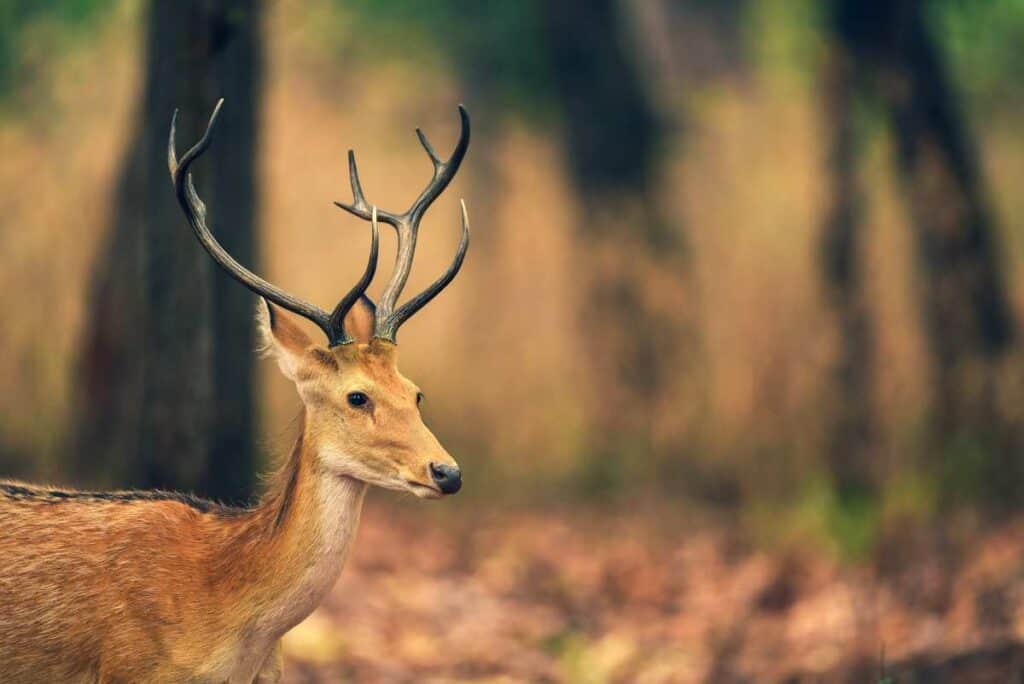
Environmental Impact of the Barasingha Deer
Forest Life
There are three recognized subspecies of Barasingha Deer: western swamp deer, eastern swamp deer, and southern swamp deer. Each of these three subspecies tends to make its home in grasslands, forest perimeters, alongside rivers, and in the swamplands for which the species as a whole are attributed their title of “swamp deer”.
Habitually, this species of deer will travel in large groups during the wintertime and during the rut—when mating takes place—and then break off into smaller herds in the summer, the vast majority of which are comprised of the females and their offspring; meanwhile, the males form small herds together until mating season comes back around.
These males can range up to 6 feet in length and weigh in at nearly 600 pounds, sporting the many antler tines for which they are also named; their coats tend to be shaggier than many other deer, and a brownish hue with paler undertones turning full white on their undersides. Females tend to be smaller than the males and paler in color, ranging in weight up to around 300 pounds. Like many deer, their fawns have distinctive white spots that fade over time as they mature.
Barasingha Deer differ from certain other breeds of deer in that they are active and often feeding during the day as opposed to at sunset; however, they do still bed down during the heat of the afternoon. They will typically spend a good deal of time grazing and pause to drink water two to three times—typically more often during monsoon season.
The Barasingha Deer is highly sensitive and easily spooked, retreating quickly into its habitat when it senses danger and warning other deer among the herd with a sharp, baying call that has been compared to that of a roe deer.
Food Chain
Barasingha Deer fulfill a rather typical place on the food chain as herbivores, their diet consisting mainly of such plants as can be found in wetlands, including grasses and herbaceous plants. They serve the important purpose of helping to keep the ecosystems in these areas from facing overgrowth and their lifestyles keeps the habitat in balance.
As far as predators go, these swamp deer do have several natural enemies, as there are plenty of carnivorous predators that frequent the marshes and swamps that this species of deer calls home. One of their primary predators are tigers.
When they are left to their own devices and outlast their predators, however, Barasingha Deer can survive up to 20 years in the wild and an additional 3 to 5 years in captivity.
Barasingha Deer – Helpful or Harmful to Its Environment?
The Barasingha Deer is quite helpful to its environment when left undisturbed to coexist within a natural habitat. As an indigenous species, not a transplanted one, this breed of deer has proven very useful in naturally keeping wetland plants trimmed to healthy levels with proper, natural foraging practices.
Can You Hunt and Eat Barasingha Deer?
Due to a steady decrease in numbers over the years, the fragmenting of the known herds across the Indian subcontinent, and the unfortunate extinction of herds in areas such as Pakistan and Bangladesh, the Barasingha Deer has become a protected species particularly on government land such as state parks throughout India where they are still naturally occurring.
While it is illegal to hunt and eat this particular species of deer, poachers do take advantage of the deer ranging out from protected environments for trapping, killing, and selling at local markets.
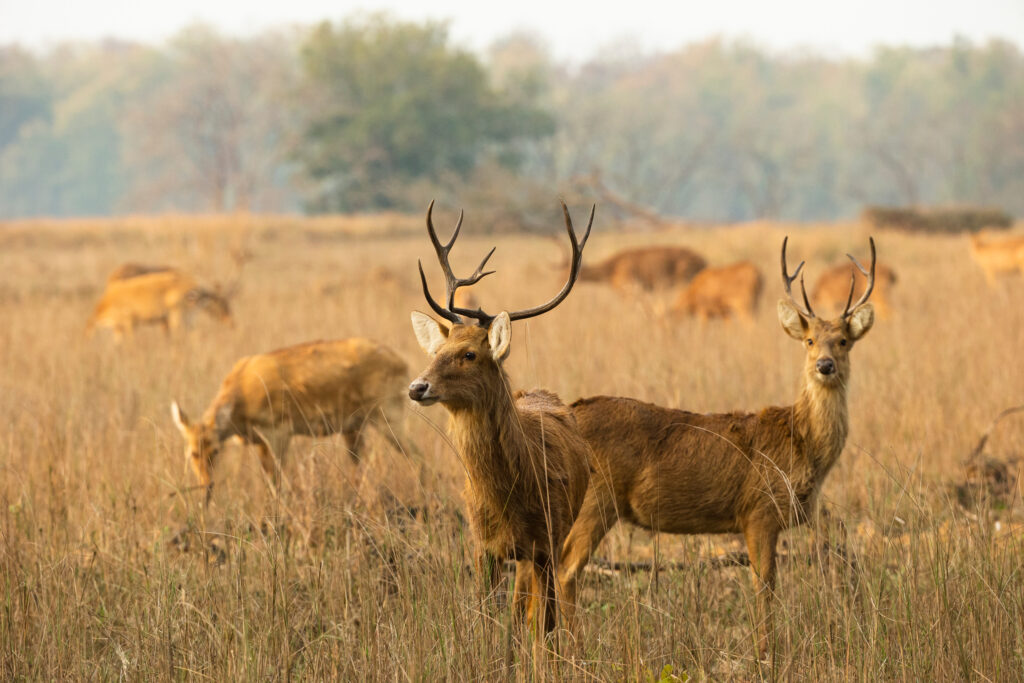
Struggles Facing the Barasingha Deer Population
Despite there being a concerted effort among government authorities to keep Barasingha Deer and other swamp deer types alive and thriving, there are many dangers that continue to haunt this deer population, both from legal and illegal channels, natural and unnatural.
The illicit activity of poaching is highest on the list of threats that currently face the Barasingha Deer population; when these deer leave protected areas such as during migration or mating seasons, they are often set upon and killed for the prize of their meat and antlers, which are then sold at the regional markets.
In addition, the legal but environmentally devastating impacts of habitat reduction through the conversion of wetlands to agricultural use has been markedly high on this particular deer species as well as many others. Coupled with the ongoing impacts of water and wetland pollution, harvesting of necessary grazing grasses and trees from the environment, and even illicit farming on protected land, it soon becomes clear there are few safe places left for the Barasingha Deer. In addition to these manmade threats, there is also the factor of their natural predators, of which they have several—chief among them being tigers.
As of the late 2010s, in an effort to conserve what remains of their population, the majority of the known Barasingha Deer population now lives on government reserves and wildlife parks under protection. This gives them the opportunity to live as safely and naturally as possible while attempting to keep their numbers from diminishing any further. This has helped them to rally somewhat, with several thousand western and eastern swamp deer and several hundred southern swamp deer being reported in the mid-to-late 2010s in the wild,
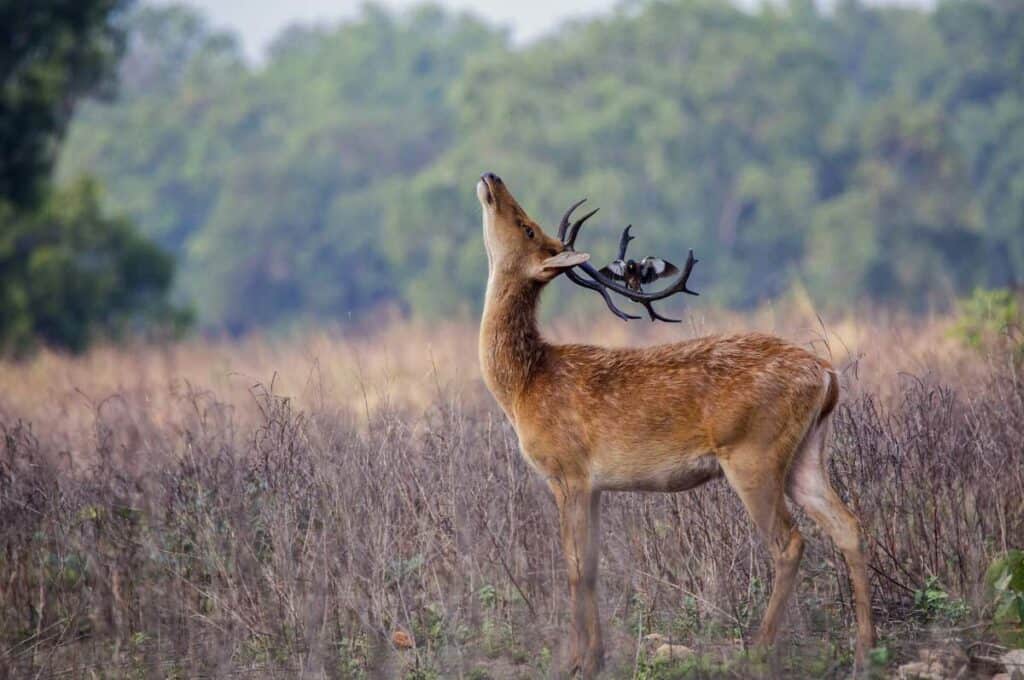
Wrapping up Our Guide on the Barasingha Deer
Excited to learn about this rare and precious species of deer? There is so much important knowledge we can glean about deer species like the Barasingha Deer that we share the world with, and the impact we and these creatures have on each other. Check out the rest of our site to learn more about deer species around the world!

